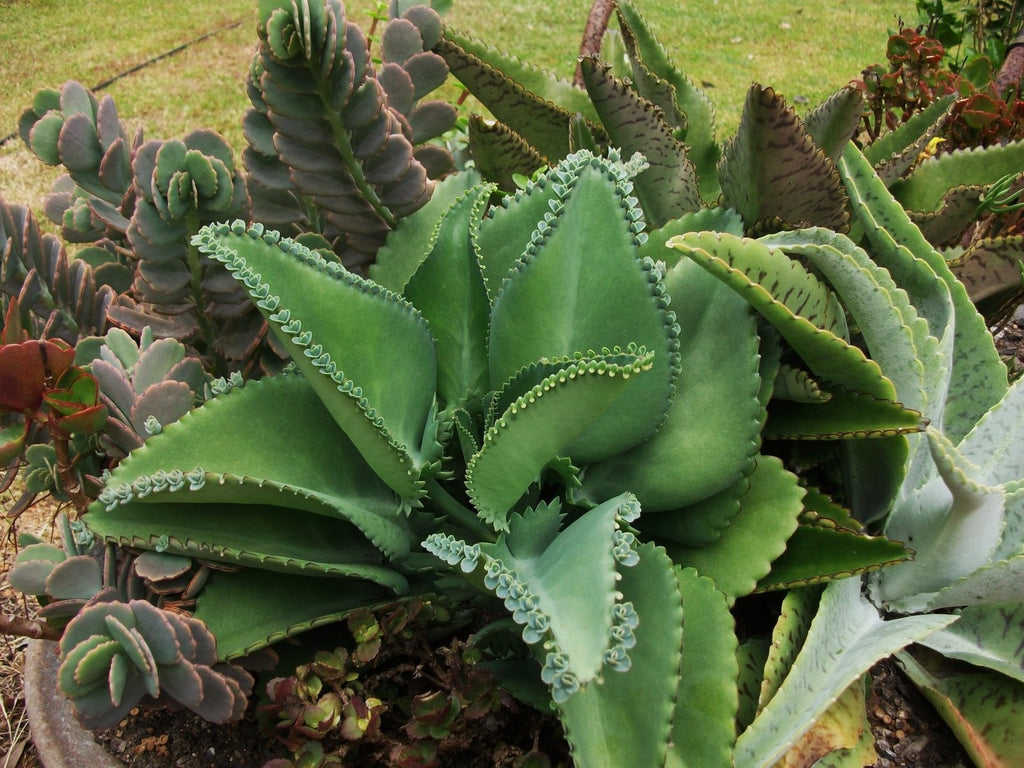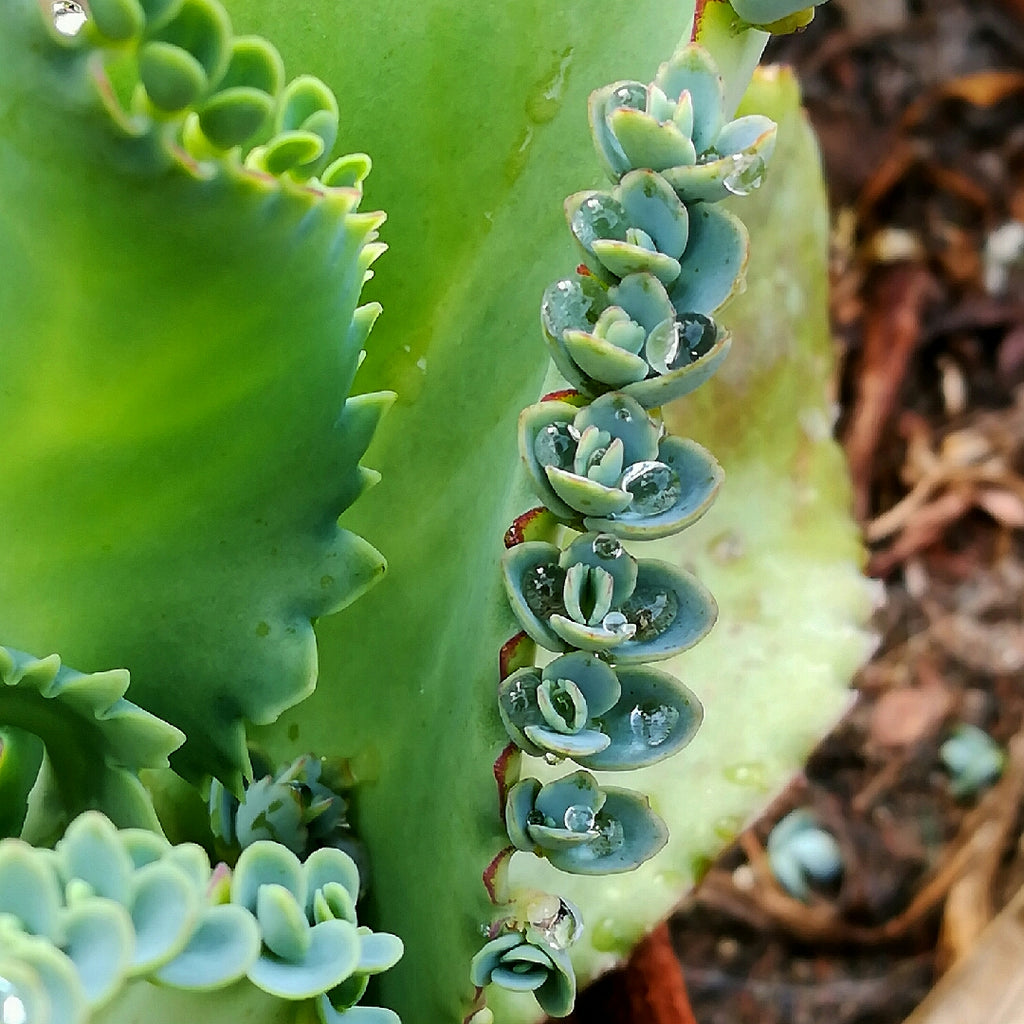
Houseplants are a wonderful way to liven up any indoor space and bring the joys of gardening into your home. Many of us, however, worry about houseplant care and how to best help our indoor plants thrive. While many common garden plants can become houseplants with a little effort, sometimes it’s best to have an easy-to-care-for variety in your home. Mother of thousands—also called “mother of millions” and “Kalanchoe daigremontiana”—is a unique and interesting succulent that makes for a great indoor plant. Easy to care for and visually appealing, mother of thousands can be a fun addition to both your décor and your indoor garden. Let’s dig in and learn about this plant and how you can bring it into your home!
A quick warning for parents and pet owners: mother of thousands is toxic to both humans and cats or dogs, so please be careful if you have pets or small children! If you’re looking for safer alternatives, check out our guide to pet-friendly houseplants. If a pet or person has ingested part of it, contact poison control or an emergency veterinarian.

Formerly known as Bryophyllum daigremontianum, mother of thousands is a tropical plant native to Madagascar. However, human activity has spread this plant around the world, and it can now be found growing wild in tropical and subtropical regions around the Caribbean, Latin America, and even in parts of Mediterranean Europe. This brings us to an important point about mother of thousands—it is a prolific plant and can quickly become an invasive species under the right conditions. If you choose to grow it outdoors, please keep it in a container and make sure it doesn’t spread! We’ll talk about this in a bit more depth later on, but it’s an important consideration with this particular plant.

The good news is that mother of thousands thrives in containers, and this plant is very easy to care for. It handles drought and heat well, but it is not at all cold hardy and may die quickly if the temperature gets below freezing. Temperatures between 65F and 75F/18C to 24C are best. As a tropical succulent, mother of thousands likes a lot of sun, so keep it in a south-facing window or supply some supplementary light as you would with any other indoor plant. Without enough light, mother of thousands tends to get leggy. This isn’t healthy for the plant, so make sure you’re giving it the sun that it needs.

Forgetting to water houseplants is a classic sin of the houseplant owner, but with mother of thousands over-watering tends to be more of a problem. This plant likes a loose, well-drained soil—a potting mix formulated specifically for succulents and cacti is best—and does not need much watering to thrive. Letting it dry out completely between waterings is best, followed by a deep and thorough watering when the time comes. These plants don’t like standing water, however, so make sure your container can drain as needed. Unlike some other succulents, mother of thousands doesn’t always let you know when it needs more water, so pay a bit of attention to it—although it won’t die if you forget to water occasionally!

Now, let’s talk about why this plant is called “mother of thousands”. Part of the striking visual appearance of this plant are its beautiful leaves and then then plantlets that form on the leaf margins. These are how it reproduces; the mother plant sheds hundreds or “thousands” of baby plants onto the soil around it. While this makes for a lovely indoor plant, it is one of the reasons that mother of thousands is such an aggressive invasive in some places and why it can take over a garden space very quickly. We recommend keeping it in a wide, deep container with enough space for it to thrive and enough space (and high enough sides) to contain its plantlets. You can cultivate them as additional houseplants and even give them away as gifts—just make sure the recipient knows what they’re getting and how to care for it!
Mother of thousands is, for lack of a better word, a really cool indoor plant that can bring a lot of interests to an indoor space and can be a lot of fun to take care of. By understanding how it grows and some of the limitations around it, you can turn this beautiful succulent into a beloved feature of any indoor garden!

Leave a comment